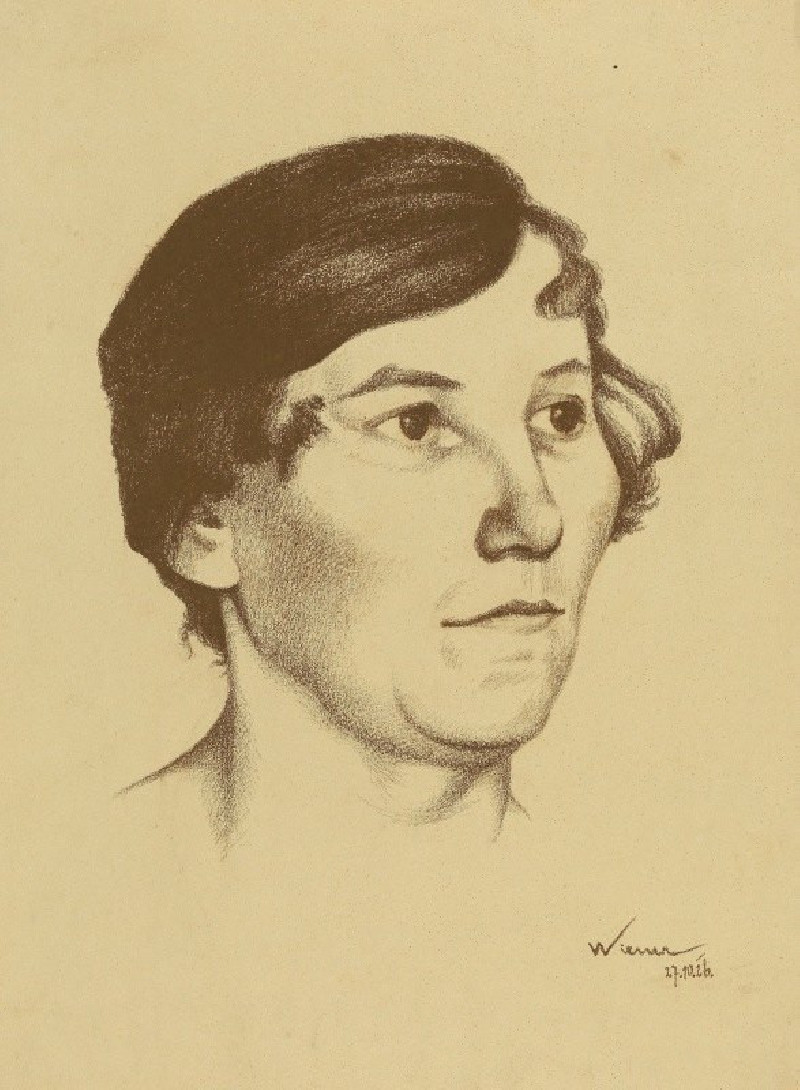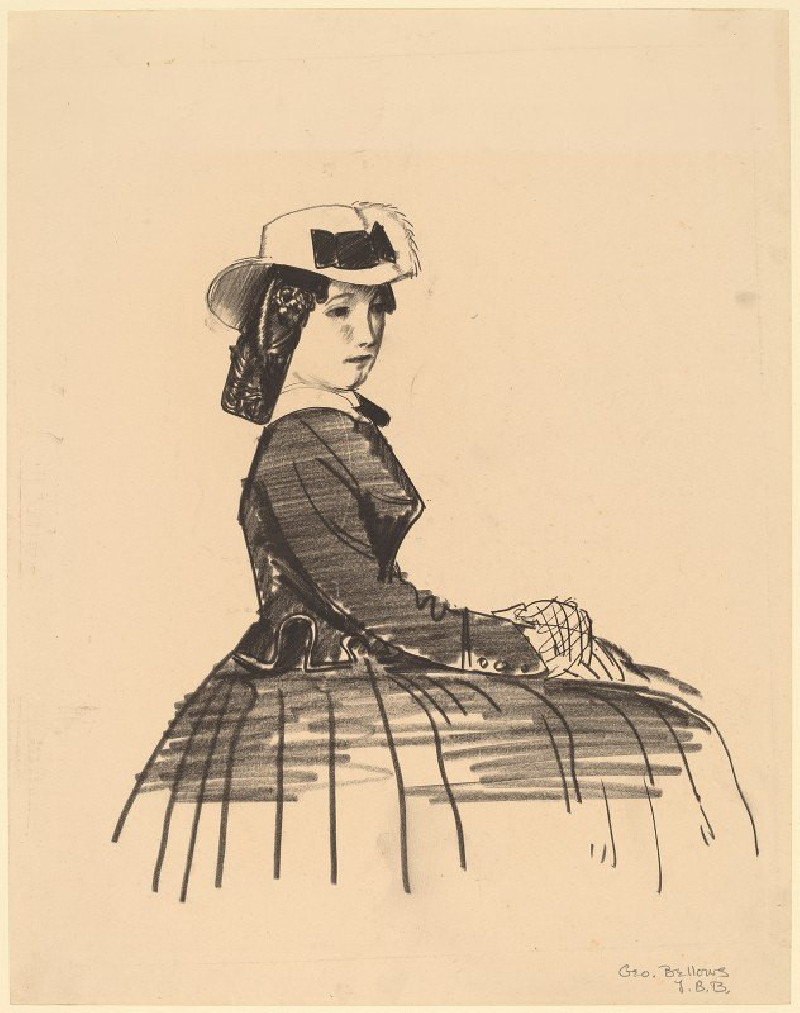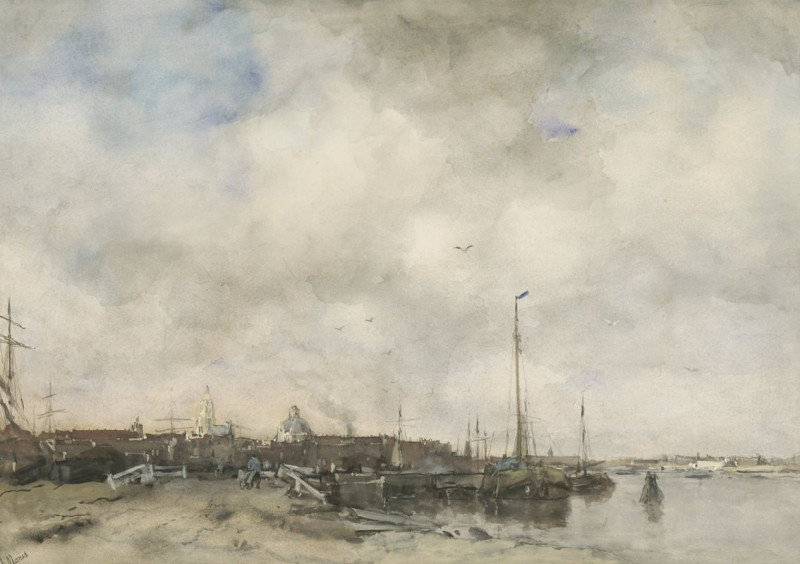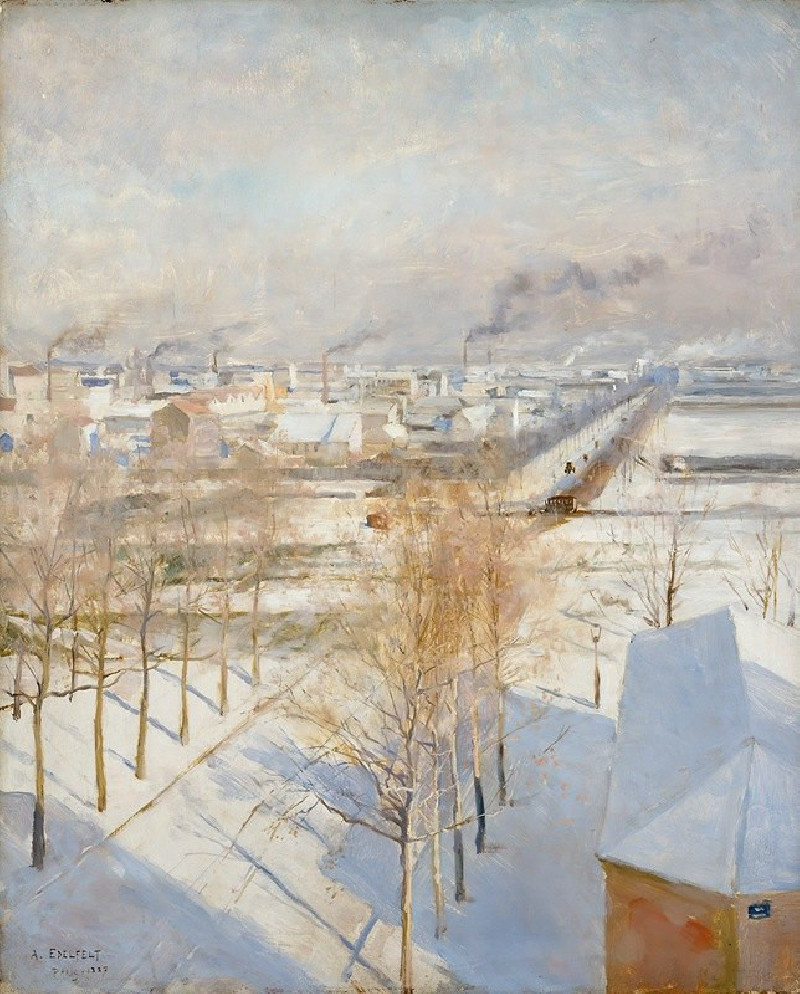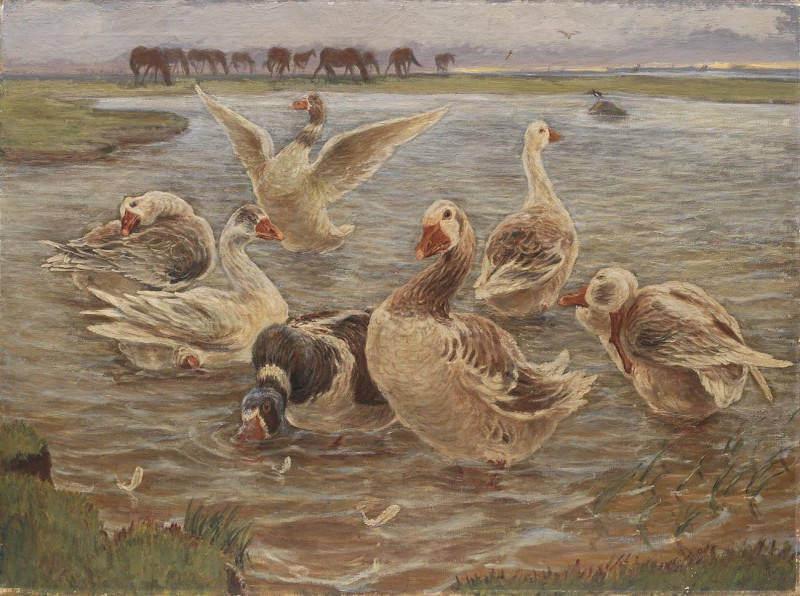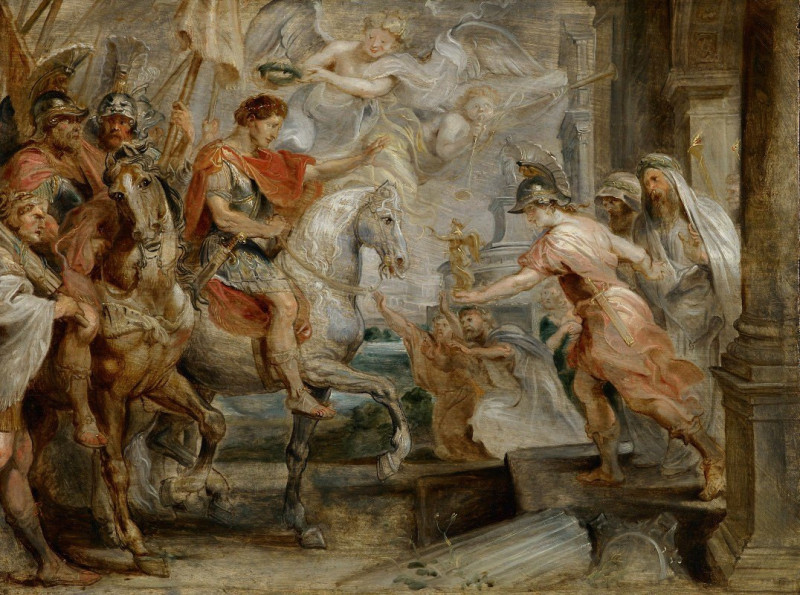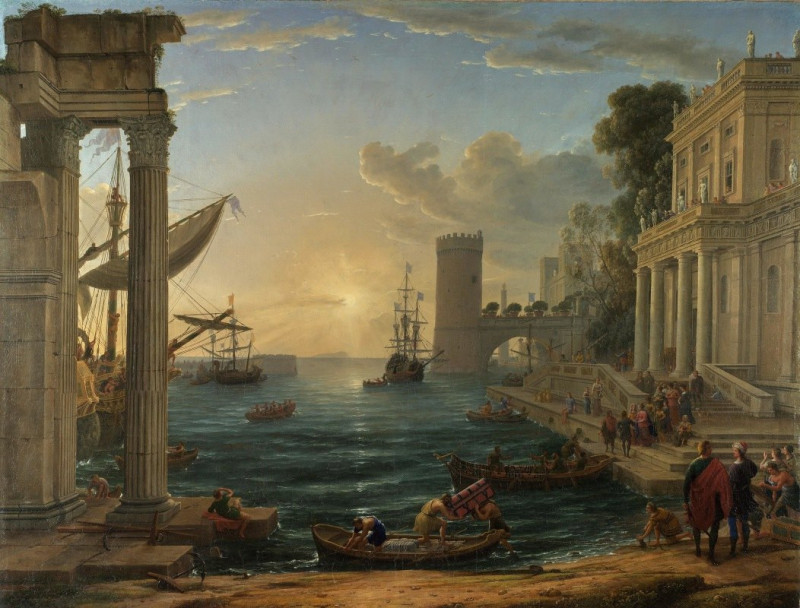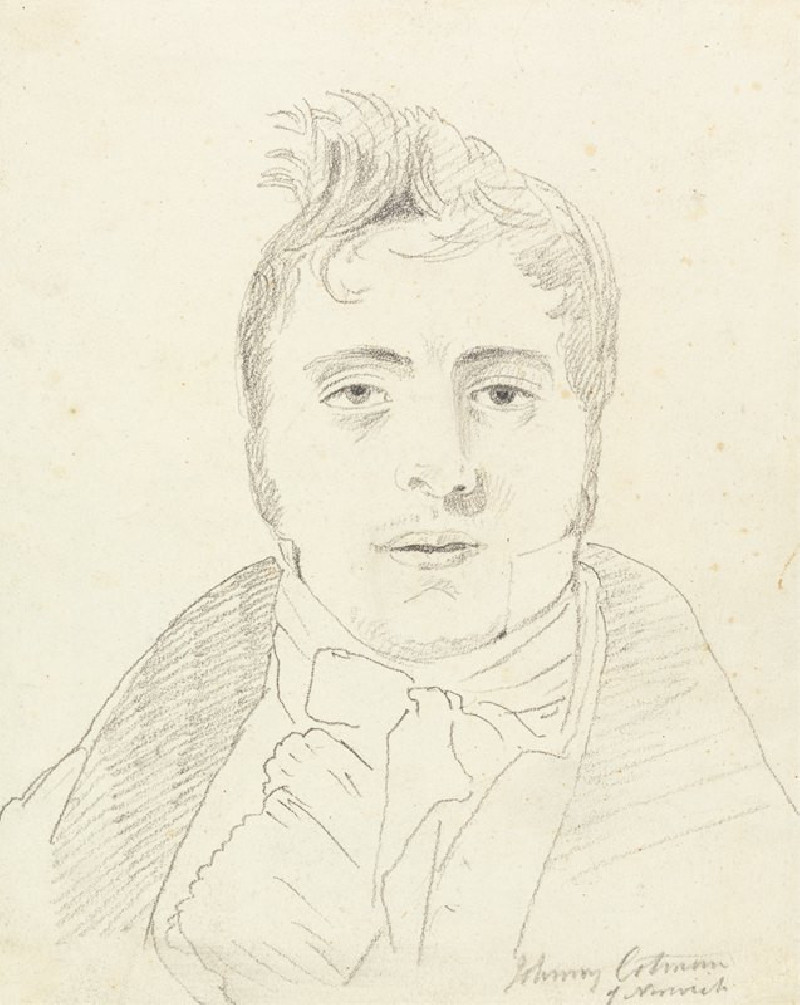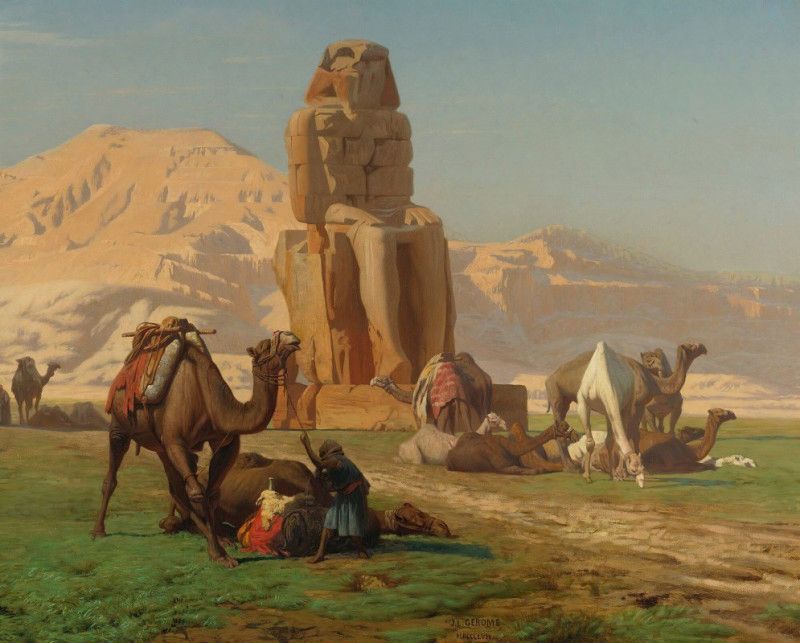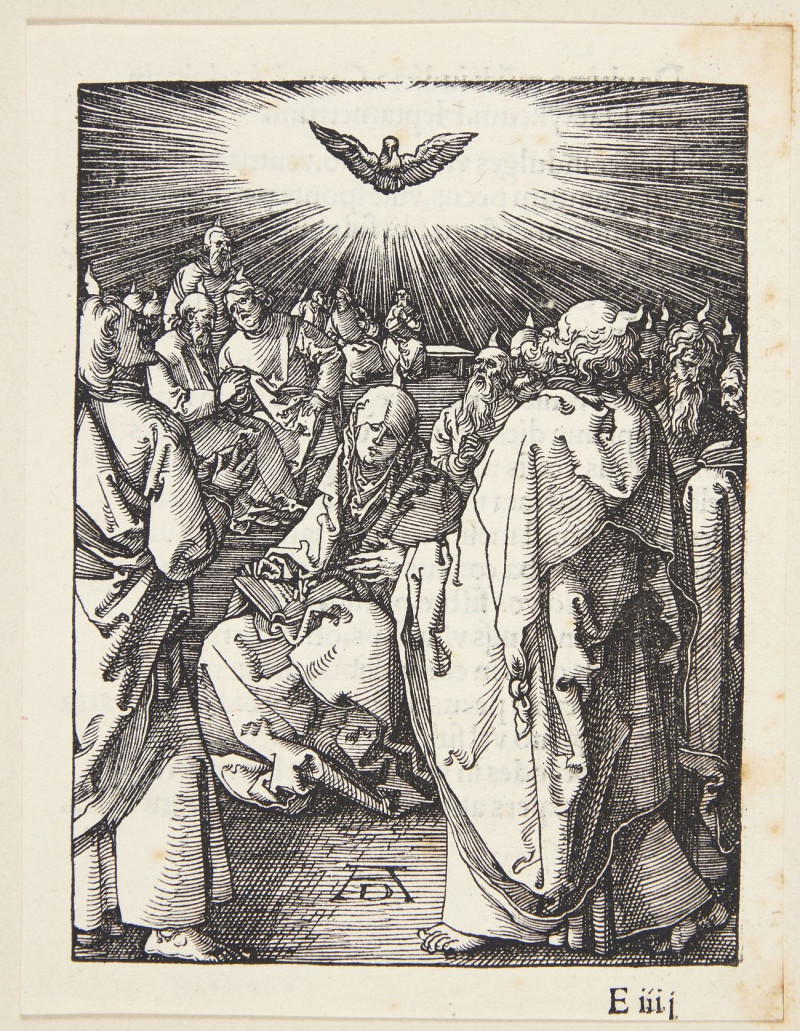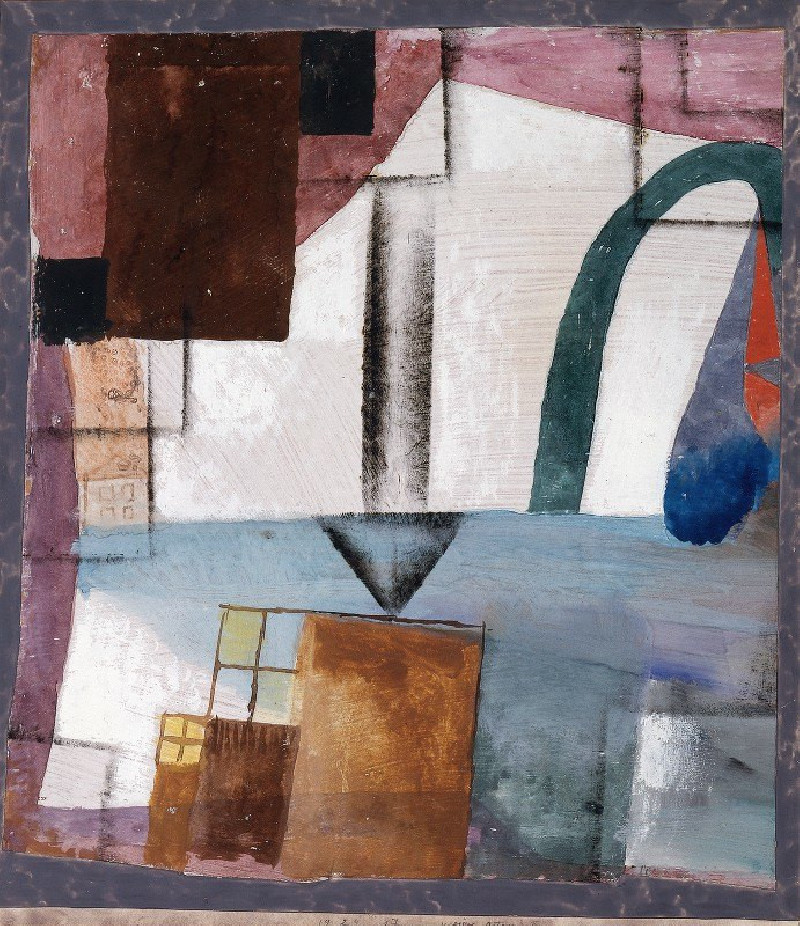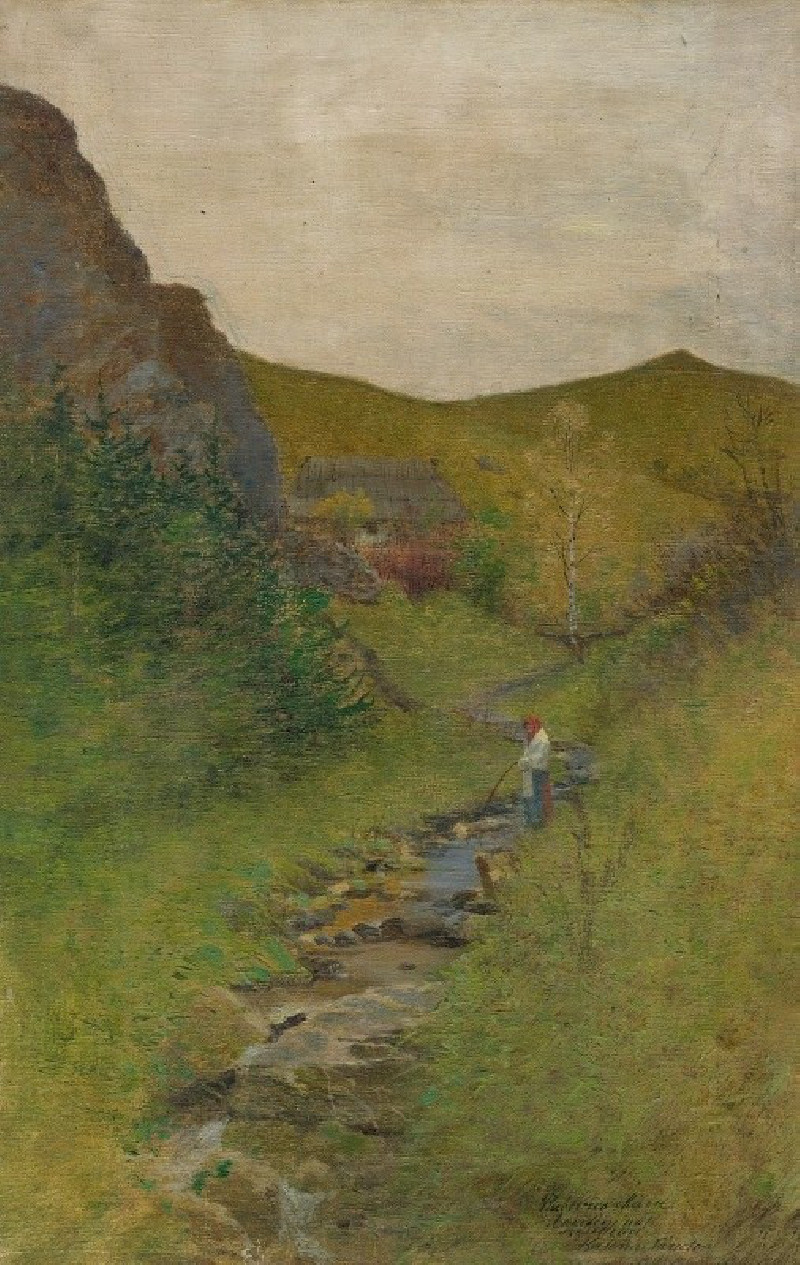Badendes Paar im Atelier (1908)
Technique: Giclée quality print
Recommended by our customers
More about this artwork
Ernst Ludwig Kirchner's artwork, "Badendes Paar im Atelier" (Bathing Couple in the Studio), created in 1908, represents a vivid example of his distinctive foray into Expressionism. This particular piece, drawn with broad, spontaneous strokes, captures a scene infused with emotion and dynamic tension.The image depicts a couple engaged in an intimate and abstract bathing ritual. The figures are portrayed in a simplified, almost sketch-like manner, yet convey a profound sense of interaction through their poses and gestures. On the right, the viewer can discern a reflection of the couple in a mirror, echoing and amplifying the central scene. This technique of reflection not only adds depth to the artwork but also introduces a nuanced commentary on perception and the intimate sphere of personal relationships.The setting, presumably the artist’s studio, hints at a private sphere where personal and artistic boundaries merge. The rough, hurried quality of the lines suggests a moment captured in raw, perhaps spontaneous expression, characteristic of Kirchner’s fast-moving brush or pencil work typical of this expressive period."Badendes Paar im Atelier" serves as a brilliant glimpse into Kirchner’s exploration of human form and emotion, marked by an emphasis on the expression of inner experiences over external realities—a hallmark of the Expressionist movement.
Delivery
Returns
Ernst Ludwig Kirchner (1880–1938) was one of the most important German Expressionist painters. He was a co-founder of Die Brücke, a group of German expressionist artists formed in Dresden in 1905. Die Brücke and Kirchner took inspiration from Vincent Van Gogh and Edvard Munch, as well as African and Oceanic art. They used woodblock printing as a medium to showcase their signature style: flat, unrealistic images with vivid colors. The recurring themes in Kirchner's artworks included exotic cultures, faraway landscapes, self-portraits, dancers and Berlin street life. His paintings and prints effectively portrayed non-European cultures despite the fact that he never traveled outside of Europe.
































